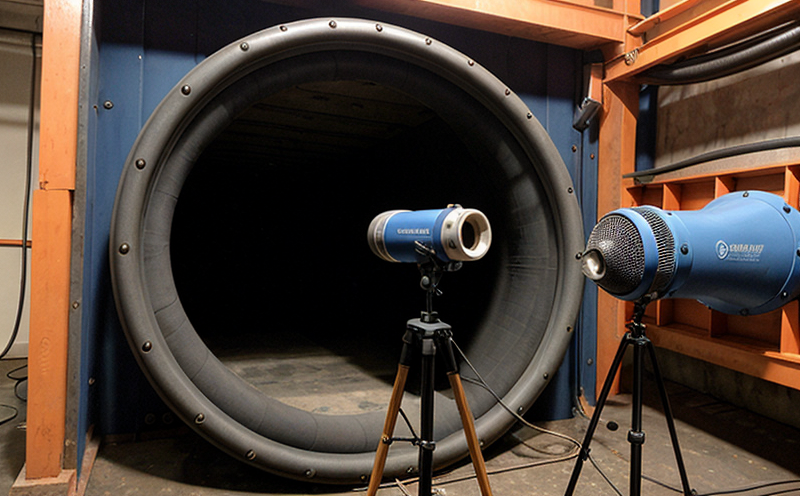ISO 22232 Ultrasonic Equipment Performance Testing
The International Organization for Standardization (ISO) standard ISO 22232 specifies the performance requirements and test methods for ultrasonic equipment used in non-destructive testing. This service ensures that ultrasonic testing instruments meet stringent quality standards, enabling accurate and reliable inspections of materials and structures without causing damage.
Accurate ultrasonic testing is essential for identifying flaws or defects within materials such as metals, plastics, composites, and ceramics. The standard defines the parameters to ensure consistency in equipment performance, including frequency range, pulse shape, sensitivity, and resolution. It covers both contact and immersion transducers, providing a comprehensive framework for testing.
The test involves subjecting ultrasonic probes to various conditions that simulate real-world scenarios encountered during industrial inspections. These include temperature variations, varying material thicknesses, and different coupling agents. By adhering to ISO 22232, manufacturers can guarantee the reliability of their products, thereby enhancing trust among customers and ensuring compliance with international standards.
Compliance with this standard is crucial for industries reliant on non-destructive testing methods. This includes aerospace, automotive manufacturing, medical device fabrication, and construction sectors where structural integrity is paramount. For instance, in aerospace engineering, precise ultrasonic testing can detect minute flaws in engine components or aircraft frames that could otherwise go unnoticed during visual inspections.
Manufacturers who opt for ISO 22232 certification demonstrate their commitment to delivering high-quality products that meet global standards. This not only enhances brand reputation but also facilitates easier market entry into countries with stringent regulatory requirements. Furthermore, it aids in reducing the risk of product failures and recalls, saving time and resources associated with rework or replacement.
For quality managers, compliance officers, R&D engineers, and procurement specialists, understanding ISO 22232 provides valuable insights into how to select suitable equipment for their specific needs. By familiarizing themselves with the standard's requirements, they can make informed decisions about purchasing and maintaining ultrasonic testing instruments.
Why It Matters
The significance of ISO 22232 Ultrasonic Equipment Performance Testing lies in its role as a benchmark for ensuring consistent and reliable performance across different manufacturers' products. This standard helps prevent discrepancies between various brands of ultrasonic testing equipment, which could lead to inconsistent inspection results.
By adhering to this standard, laboratories can provide clients with more accurate and repeatable test results. Consistency is particularly important when dealing with critical applications where even small variations might have significant implications on safety or functionality.
- Ensures uniformity in equipment performance
- Reduces variability in inspection outcomes
- Facilitates easier comparison between different brands of ultrasonic probes
- Supports regulatory compliance with international standards
The standard also promotes innovation by encouraging continuous improvement in technology. Manufacturers are incentivized to develop more advanced and precise instruments, knowing that meeting the stringent requirements will be recognized as a mark of quality.
In addition, ISO 22232 fosters collaboration among stakeholders within the industry. It provides common ground for communication between suppliers, end-users, and regulatory bodies, promoting better understanding and cooperation towards shared goals such as enhanced product reliability and reduced failure rates.
Industry Applications
| Application Area | Description of Application |
|---|---|
| Aerospace & Defense | Inspection of engine components and aircraft structures |
| Automotive Manufacturing | Evaluation of exhaust systems and body panels |
| Medical Device Fabrication | Quality control for implantable devices |
| Construction | Detection of voids or delaminations in concrete slabs |
In the aerospace and defense sector, ultrasonic testing plays a critical role in ensuring the structural integrity of aircraft parts. The high-frequency sound waves generated by probes can penetrate deep into materials to detect internal flaws that may not be visible through other means.
Automotive manufacturers use this technique during production processes to check exhaust systems for cracks or imperfections, while medical device companies apply it to monitor the quality of implants and other components. In construction projects, ultrasonic testing helps identify potential weaknesses in concrete structures like bridges or buildings before they are put into service.
Customer Impact and Satisfaction
- Promotes trust among customers due to consistent inspection results
- Reduces the likelihood of non-compliant products reaching the market
- Enhances reputation as a reliable service provider
- Supports long-term relationships with satisfied clients
Incorporating ISO 22232 Ultrasonic Equipment Performance Testing into your quality control protocols can significantly boost customer satisfaction by demonstrating a commitment to excellence and adherence to international best practices.





